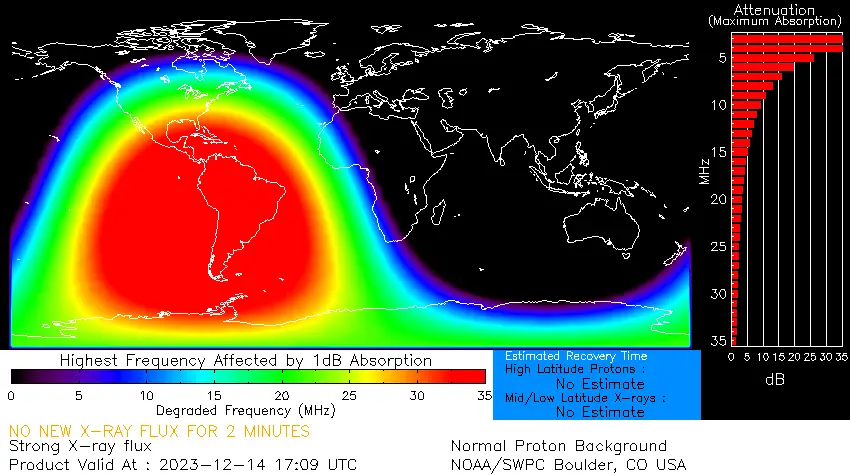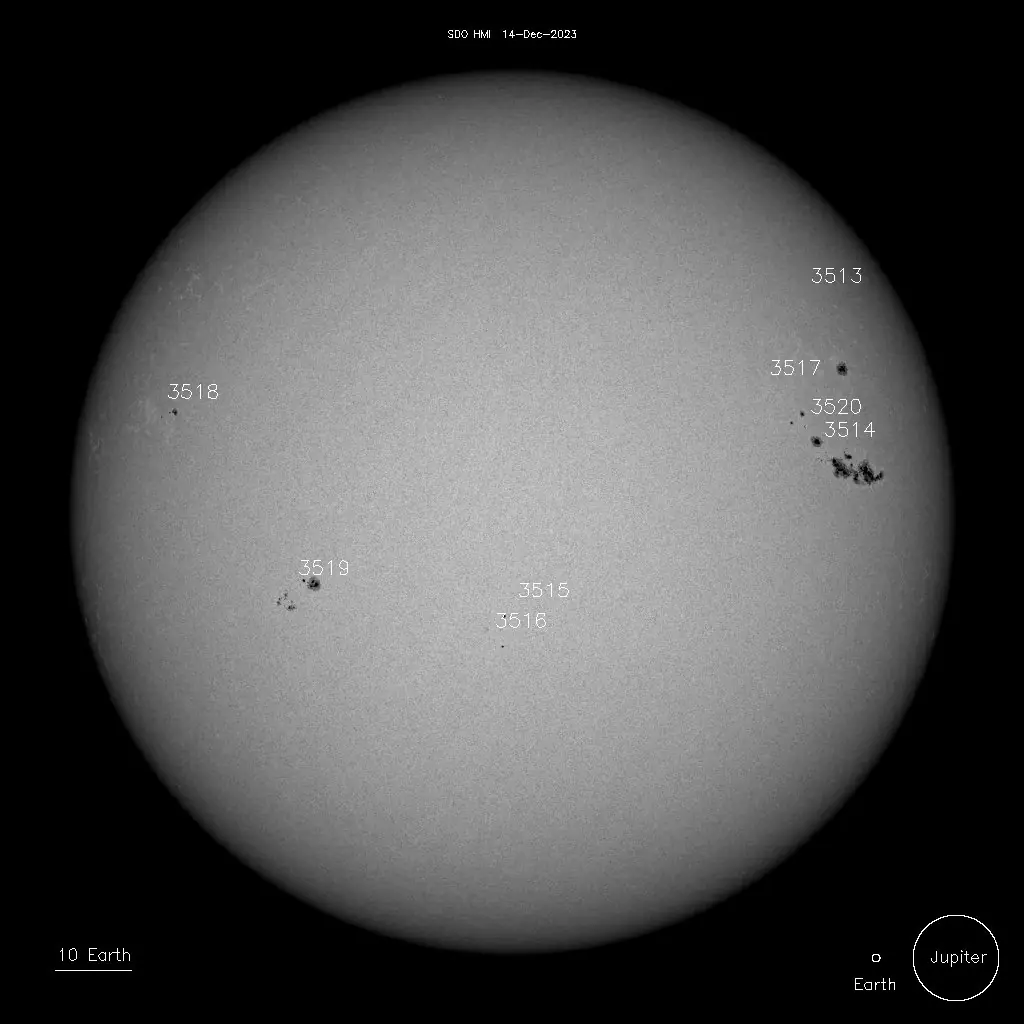A powerful solar flare measuring X2.8 erupted from Active Region 3514 at 17:02 UTC on December 14, 2023. The event started at 16:47 and ended at 17:12 UTC.
A Type II Radio Emission with an estimated velocity of 2 118 km/s was associated with the event, indicating a coronal mass ejection (CME) was associated with the flare event.
Additionally, a Type IV Radio Emission was also detected. Type IV emissions occur in association with major eruptions on the sun and are typically associated with strong coronal mass ejections and solar radiation storms.
Radio frequencies were forecast to be most degraded over South America at the time of the flare.

The event follows M5.8 solar flare detected at 07:44 UTC today from the same region and multiple CMEs
Region 3514 (N05W43, Ekc/Beta-Gamma) — the source of X2.8, M5.8 and several C-class flares — has experienced substantial spot growth and a rise in magnetic complexity over the past 24 hours. Similarly, Regions 3519 (S12E32, Dao/Beta) and 3520 (N10W41, Dao/Beta) showed growth and activity, with Region 3519 contributing to a few C-class flares. Other regions remained mostly quiet and stable.


Featured image credit: NASA SDO/AIA 304, Helioviewer, The Watchers
If you value what we do here, create your ad-free account and support our journalism.
M5.8 solar flare and multiple CMEs, minor geomagnetic storms expected by December 16
Thursday, December 14, 2023
Impulsive M5.4 solar flare erupts from Region 3511, multiple filament eruptions
Saturday, December 9, 2023
Multiple CMEs heading toward Earth, G3 – Strong Geomagnetic Storm Watch in effect
Wednesday, November 29, 2023
M9.8 solar flare erupts from geoeffective Region 3500, Earth-directed CME likely
Tuesday, November 28, 2023
Large filament eruption produces partial-halo CME, impact to Earth expected on November 5
Saturday, November 4, 2023
Strong M8.7 solar flare erupts from Region 3435
Thursday, September 21, 2023
Strong M8.2 solar flare erupts from Region 3435
Wednesday, September 20, 2023